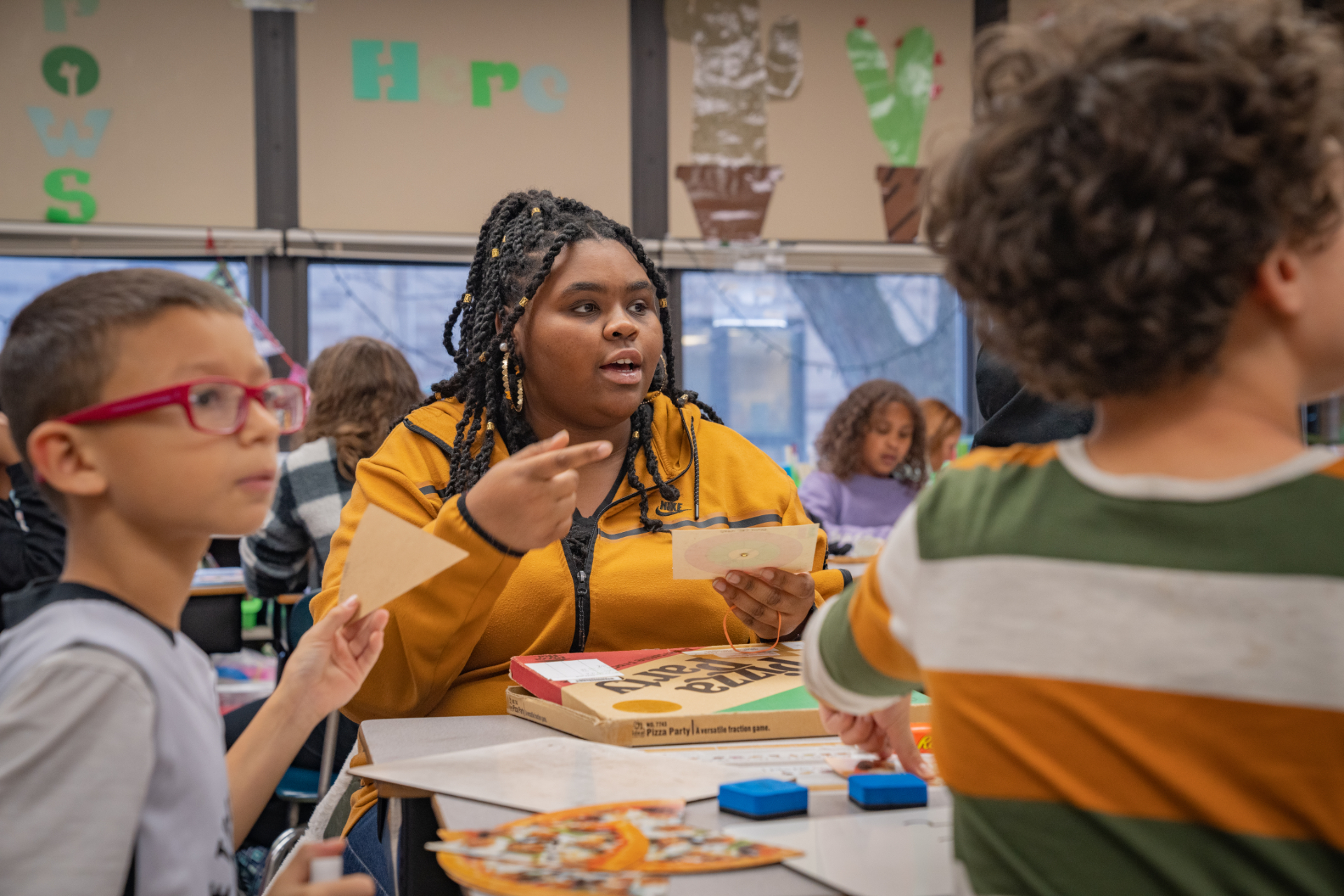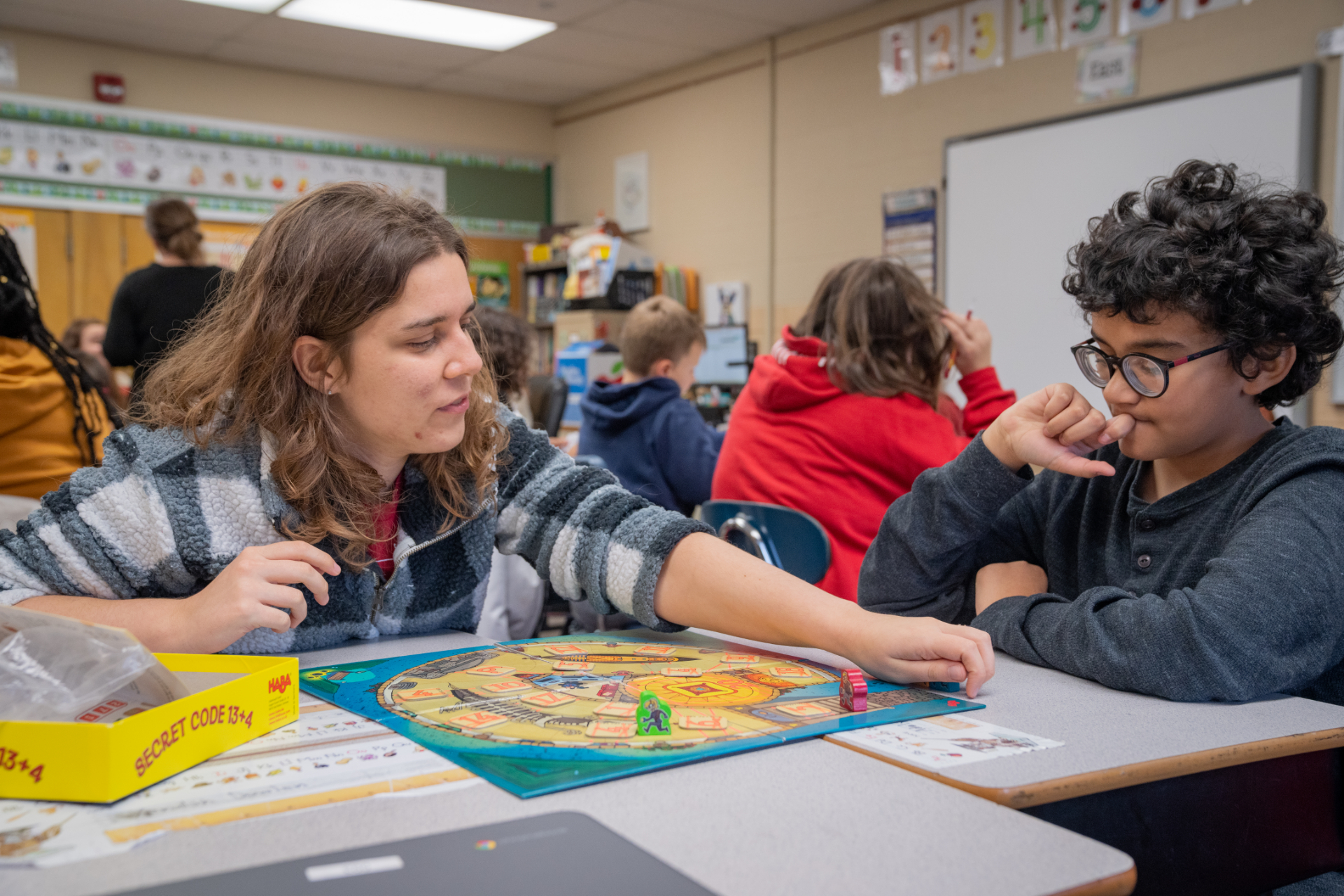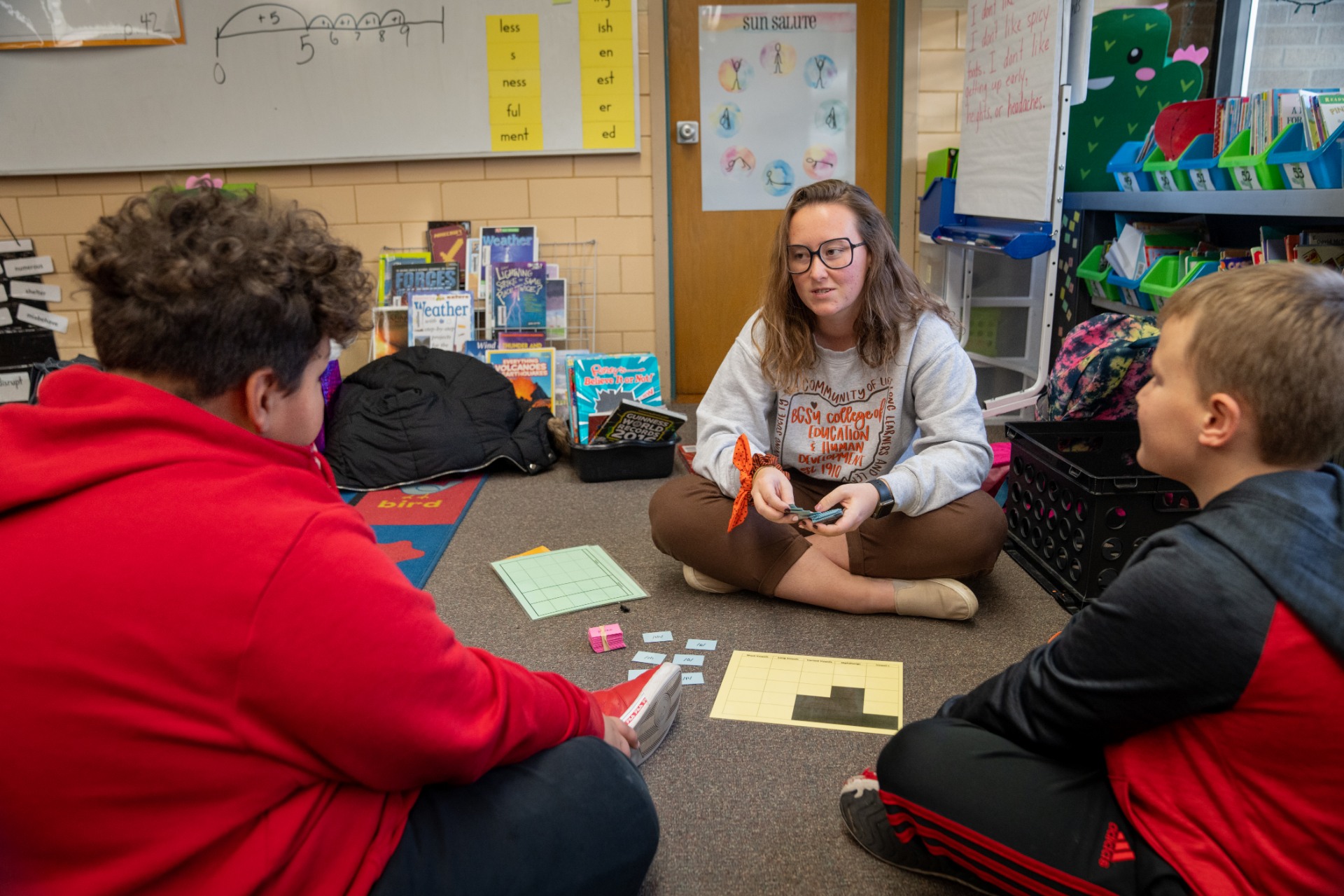
BGSU ‘TIME’ brings critical tutoring services to local school districts and career experience for University students serving as tutors
The program, made possible by a grant from the state of Ohio, provides K-12 students with additional help in math and language arts
With the aid of a grant program from the state of Ohio, the Bowling Green State University College of Education and Human Development is providing tutoring services in two key content areas to fourth and fifth-grade students in partner districts across northwestern Ohio.
The after-school program, called BGSU TIME — Tutoring In Math and English/Language Arts — matches pre-service teachers from the University with students requiring additional help twice per week, both remotely and in person.
The state of Ohio awarded the University a $700,000 Statewide Math and Literacy Tutoring Grant that helps fund the program, providing districts with additional after-school resources and money to pay pre-service teachers from BGSU, who are gaining critical career experience and making connections with students.
“I just love the connection I have made with my students, and I love when they feel comfortable sharing with me about their day and how they are feeling,” said Kate Noonan, a junior Inclusive PreK-5 Education major. “I think they have gotten so comfortable with trying to answer questions and aren’t afraid to try. I like being a support for them. I can tell they have learned so much and have become stronger readers.”

Dr. Kate Brodeur, an associate professor and coordinator of the Graduate Reading Program, said Ohio’s grant program not only allows BGSU to collaborate with others doing similar tutoring work around the state and country but also provides a more comprehensive experience to University students who become tutors.
Because tutors are paid, their part-time job directly correlates to their major — all while providing real-world experience of connecting with elementary students to complement their traditional instruction and student teaching experience.
“It allows us to pay pre-service teachers to be tutors and because of that, I think we’re able to do more in-depth training and focus on more evidenced-based practices,” Brodeur said. “They’re having the kinds of experiences you just can’t do in a classroom: Having flexibility and making quick decisions, and that’s exactly what they’re going to do as classroom teachers.
“That really helps them, not just as tutors, but as teachers as well.”

Dr. Thomas Roberts, associate professor and PK-5 co-coordinator, said the social-emotional learning of the K-12 students is a key portion of the grant. Tutors and students spend five minutes at the beginning of each session for tasks such as mindfulness and goal-setting, and the process of delivering a session entirely remotely has been a new experience for many tutors.
“As COVID showed us, one of the things that is really beneficial is the ability to shift to online learning, perhaps even completely,” Roberts said. “Building those skills — how you communicate through Zoom or Google Meet, how you show visuals, how you read with students — has been really beneficial as well.”
Ava Coppock, a junior inclusive Early Childhood major, said the experience of being a tutor has made her more confident in delivering her math lessons, which she has now used in a real-world setting.
“I now feel better-prepared teaching mathematics through the use of various strategies,” she said. “So far my most memorable experience was when I showed my tutoring students the progress they made through their progress charts. They were very pleased to see how their scores have increased.”
While being a TIME tutor has not only led pre-service teachers into making adjustments and putting coursework into action, it has also brought success for fourth and fifth graders who have made improvements during this school year.
For pre-service teachers dedicated to reaching future generations, that is the most rewarding part, Roberts said.
“They get that experience of success where they plan a lesson, it goes really well and the kids are happy to be there,” Roberts said. “When you get fourth and fifth graders excited to spend an hour after school doing math or reading, that is a pretty big deal to our pre-service teachers.”
Related Stories
Media Contact | Michael Bratton | mbratto@bgsu.edu | 419-372-6349
Updated: 10/16/2023 10:21AM




